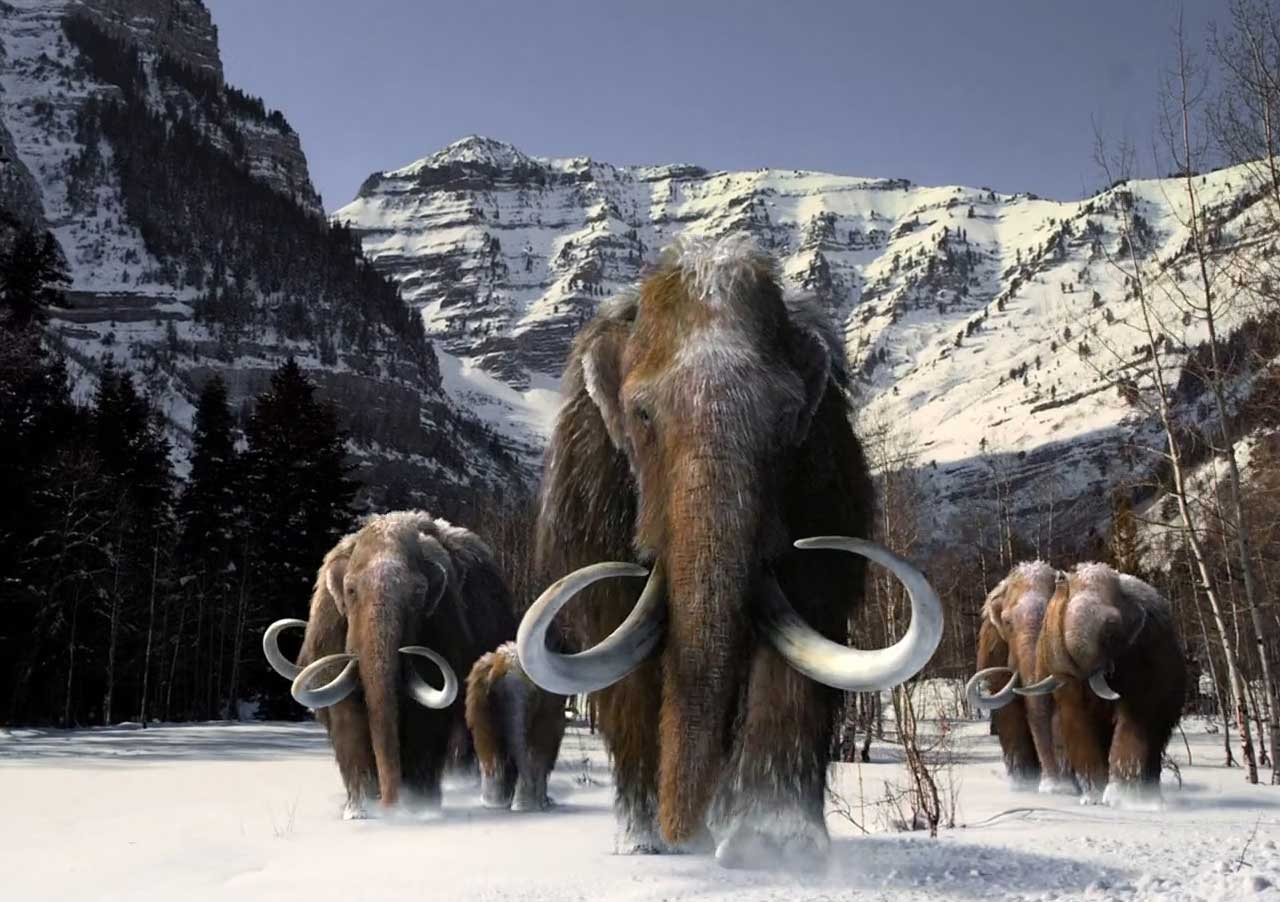Here’s a fact that may surprise you: secular scientists have no good explanation for the ice age. They have theories, but none work. “It’s a killer,” says one scientist. “It’s maddening,” adds another.
The most common theory, the one you’ll probably find if you look it up, is the astronomical (or Milankovitch) theory. It is that a very slow and very slight change in the Earth’s orbit dramatically changed the climate on Earth. In the 1970s scientists measured chemical variations in layers of deep arctic ice, assigned dates to those layers, and claimed the dates matched astronomical cycles. Under this theory there were about 50 ice ages in the last 2.5 million years, with the most recent peaking around 20,000 years ago.
Jake Herbert, a scientist with the Institute for Creation Research, has written several articles in Acts and Facts that destroy this theory. (I lean on his articles heavily in this post, and if you haven’t yet subscribed to that wonderful (and free!) magazine, I encourage you to do so at icr.org.) Herbert notes that the dates scientists now ascribe to those chemical variations no longer match the astronomical cycles. In other words, the calendar foundation of the astronomical theory has been ripped out from under it.
Herbert notes a second problem – even if the cycles still matched, why did the climate change so severely? Noted astronomer Fred Hoyle mocked the astronomical theory:
If I were to assert that a glacial condition could be induced in a room liberally supplied during winter with charged night storage heaters simply by taking an ice cube into the room, the proposition would be no more unlikely than the Milankovitch theory.
The heavens operate like a precise clock. Computers today can model the distance of the Earth from the Sun going back thousands or (using secular deep-time assumptions) even millions of years. They find no significant deviation.
I think most scientists are willing to overlook the mismatch in the cycles, and the failure of computers to simulate an ice age, because they have no better hypothesis. But here’s a fact that kills all astronomical theories. None of them can explain ice miles thick.
The glaciers were two miles or higher in many places, including much of North America. The seas worldwide dropped almost 400 feet. No theory based solely on decreasing sunlight can explain this. If the Earth simply got colder, evaporation would slow, and snowfall would subside. You don’t get ice two miles high. So how do you get an ice age?
The answer is in the Bible. The Bible tells us there was a great Flood, the Flood of Noah, thousands of years ago (I like the estimate of 3300 BC for the Flood). Genesis 7:11 tells us “the fountains of the great deep burst forth.” I think this refers to both volcanoes and underground oceans. The whole Earth was flooded, and tsunamis wiped out all land life not in the Ark. Continents crashed into each other like freight trains, and the collisions built the mountains we see today. Particles from smoldering volcanoes blocked sunlight for perhaps three to five hundred years, and hot lava heated the oceans worldwide to a warm bath. You had reduced sunlight and warm water for hundreds of years. Think of a giant El Niño. Hundreds of years of reduced sunlight and warm oceans are the only explanation for ice two miles high.
The Flood was a real event. In my post Memories of the Flood, I describe the flood memories of cultures worldwide, from the jungles of Indonesia to Hawaii to the deep Amazon. How did ancient Hawaiians get the name of Noah right and know that he and his three sons built an ark? You think the Hebrews sent them a letter?
In his most recent article in the November issue of Acts and Facts, Herbert notes that the Biblical model solves another major mystery – the existence and then disappearance of millions of wooly mammoths in Siberia. He points out the strong evidence that large numbers of mammoths lived in Siberia during the Ice Age, and notes that winters in Siberia today are far too cold (Minus 40 Fahrenheit is common) for these animals. Herbert states that the only logical theory is that Siberia’s climate was more temperate during the Ice Age, which is what we would expect from warm oceans without Arctic ice. Herbert notes that the coastal lowlands of Siberia were never covered by ice, even though secular ice age models predict they would have been. Finally, Herbert points out that the Biblical model tells us why the mammoths went extinct. When the arctic ocean finally did freeze over, and the moderating influence of warm sea air was no more, the climate changed quickly. The Biblical model predicts that colder high-latitude temperatures, combined with a dryer climate at the end of the Ice Age, would have resulted in enormous dust storms, which buried the mammoths alive. Herbert notes that many mammoth carcasses are found in frozen hills of wind-blown silt.
How do you get an Ice Age? If you look to the word of God, to the Bible, you will find the answer.
Thanks for reading. Please spread the good news of modern science. Together we can change the world.
Doug Ell


















Leave a Reply